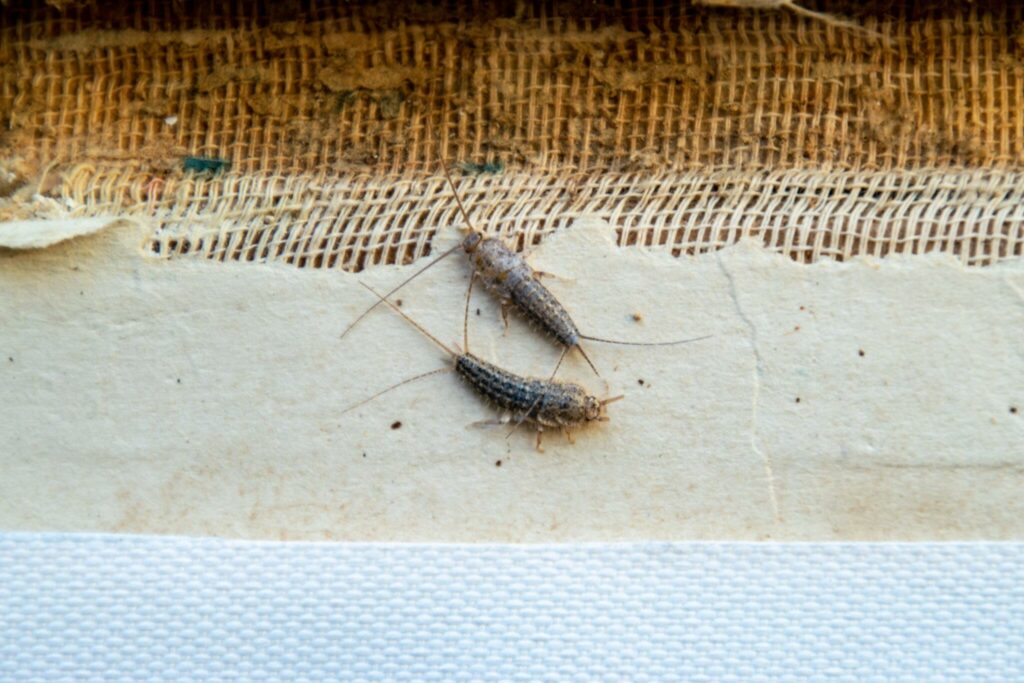
How to Protect Your Home from Silverfish
You’ve likely encountered silverfish in your New England home at some point. These small, harmless insects are quite common, but they can become a nuisance when they infest your living space. Silverfish are recognizable by their shiny silver appearance, distinctive antennae, and fine, fish-like scales covering their bodies. Adults typically measure around ¾ inch in length and feature two antennae and three tail projections.
As female silverfish mature, they continually lay eggs in concealed areas throughout your home. These eggs hatch within three weeks, and it takes just four to six weeks for silverfish to reach adulthood. This rapid life cycle means that a home infestation can develop swiftly. The good news is, you can count on Clark’s Termite & Pest Control for assistance!
Are Silverfish Harmful?
While silverfish may not pose a health risk by biting or causing illness, they can still be a nuisance. They can contaminate your food by leaving waste behind, and their chewing habits can damage your home and the items within it. This includes linens, paper, wallpaper, book bindings, carpet, curtains, and furniture coverings. Their feces can also lead to unsightly stains.
Spotted silverfish? Don’t hesitate, call Clark’s at 866-781-4991!
Where to Inspect for Silverfish in Your Home
To detect a potential silverfish problem, homeowners should inspect areas with high humidity and minimal light, such as basements, kitchens, and bathrooms, where silverfish tend to thrive. Dark, undisturbed spaces like closets and storage areas are also common hiding spots for these pests. Look for signs of infestation, including yellow stains, scales, or tiny black, pepper-like feces.
What Attracts Silverfish?
Silverfish are attracted to items in your home that contain starches, sugars, and cellulose. This includes paper, cardboard, wallpaper, books, cereals, grains, and clothing. It’s crucial for homeowners to be proactive in safeguarding these items since they serve as potential food sources and nesting materials for silverfish.
Preventing a Silverfish Problem
To prevent silverfish issues, homeowners can reduce humidity levels by using dehumidifiers and promptly addressing any plumbing leaks. Regular cleaning, decluttering, and sealing cracks and gaps around windows, doors, and the foundation can help deter not only silverfish but other pests as well. Storing food items in airtight containers and maintaining cleanliness, especially in hard-to-reach spaces, can make your home less inviting to silverfish.
Don’t wait for an infestation, call Clark’s at 866-781-4991 today!
Getting Rid of Silverfish
Homeowners can eliminate silverfish by using traps like glue traps or baited jars to capture them. Additionally, applying diatomaceous earth in areas frequented by silverfish can effectively dehydrate these pests. Regular cleaning and decluttering can reduce hiding spots and, in turn, decrease the silverfish population. For a more comprehensive and long-term solution, consider hiring a professional pest control service like Clark’s.
The Clark’s Solution
Clark’s variety of pest control services can help protect your home from silverfish and many other pests. Don’t let a silverfish infestation take over your home – call Clark’s today to safeguard your home from seasonal pests year-round.
